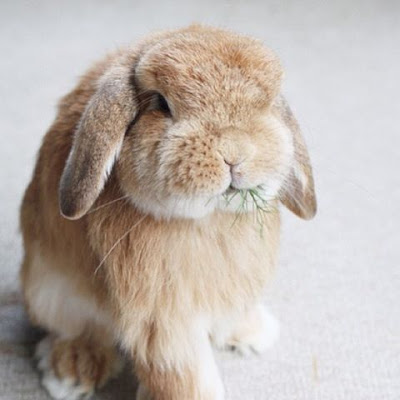 A man from the Netherlands named Adrian DeCock has been made famous for developing this breed. He crossed a Netherland Dwarf buck to a French Lop doe, and developed the breed from there. The breed first appeared in America in 1975 and attracted immediate admiration. It was quickly recognized by the ARBA and has been one of the most popular breeds for show and pets ever since.
A man from the Netherlands named Adrian DeCock has been made famous for developing this breed. He crossed a Netherland Dwarf buck to a French Lop doe, and developed the breed from there. The breed first appeared in America in 1975 and attracted immediate admiration. It was quickly recognized by the ARBA and has been one of the most popular breeds for show and pets ever since.The original color was a dark tortoise called Madagascar, and tortoise remains the most common variety of Hollands today. Though most Hollands you see are tort or broken tort, other fairly common colors include black, blue tort, sable point, orange, chestnut, chinchilla, frosty, and the broken versions of those varieties. Rabbits that are blue-eyed white, tricolored, and any other of the lesser-known varieties are considered “colored Hollands.” Some breeders prefer to specialize in “color” and take pride when a “colored” rabbit beats the torts. There are in fact many recognized colors of Holland Lops, but they are all grouped for show into broken pattern and solid pattern.
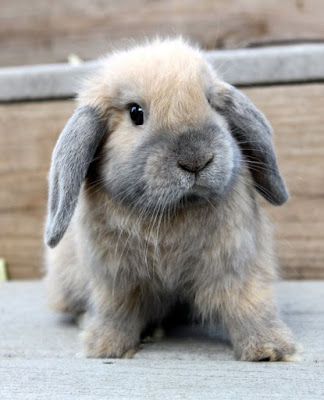 The Holland Lop is supposed to have a massive look, but be a small bunny. The standard says the ideal weight is in the 3-pound range, but breeders find their rabbits pushing the 4-pound limit as they select for thicker bone and more solid, heavyset bodies. The head should be large and bold. The ears should be short, thick, and round in shape. There are a number of ear faults, such as thin ears, rolled ears, or a “tight crown” which causes the ears to stick out to the sides instead of fall against the side of the head. The body should be short and muscular, with shoulders of nearly equal depth and width as the hindquarters. The coat isn’t worth many points in the Holland standard compared to type, but it should be a gentle rollback.
The Holland Lop is supposed to have a massive look, but be a small bunny. The standard says the ideal weight is in the 3-pound range, but breeders find their rabbits pushing the 4-pound limit as they select for thicker bone and more solid, heavyset bodies. The head should be large and bold. The ears should be short, thick, and round in shape. There are a number of ear faults, such as thin ears, rolled ears, or a “tight crown” which causes the ears to stick out to the sides instead of fall against the side of the head. The body should be short and muscular, with shoulders of nearly equal depth and width as the hindquarters. The coat isn’t worth many points in the Holland standard compared to type, but it should be a gentle rollback. Properly typed Holland Lops have heads that are set high on the shoulders. A Holland’s head should never be pushed down to the table when judging, but the rabbit should be allowed to show off its natural head mount. These bunnies generally have nice personalities and are popular as pets.
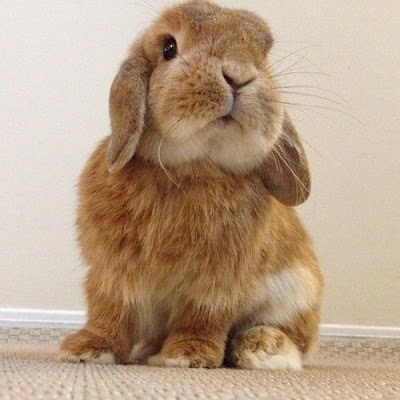 Recognized colors
Recognized colorsMany. Shown in two groups, broken and solid pattern.
Size
Not over 4 pounds.
Coat
A Holland Lop’s coat is of the rollback variety and is medium in length and dense. It does not require much grooming to keep it in good condition, so weekly or bi-weekly brushings with a brush should be sufficient. When springtime comes along, you may notice your rabbit will begin to shed a little more than usual – be sure to increase the amount of brushings should you want minimal fur in your home.
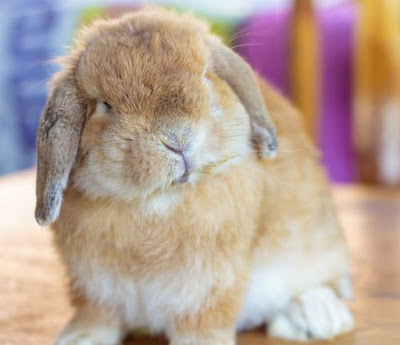 Color
ColorThis breed of rabbit is recognized in a variety of colors and groups. They are divided up into two classifications: solid (one color only) and broken (which contain patched of one or two other colors). Some examples include chestnut agouti, chinchilla, chocolate and opal in the “Agouti” group, tortoise, seal, smoke pearl and sable points in the “Shaded” group and cream, fawn, frosty, orange, and red in the “Wide Band” group.
Personality
Individual rabbit personalities vary, but the majority of Holland Lops do share some personality traits. Holland Lops as a breed are friendly, and male Holland Lops might be friendlier than females.
“The Holland Lop Rabbit is an easygoing and easy-to-handle rabbit,” says Stacy Hyatt, zone 6 director of the Holland Lop Rabbit Specialty Club. “Bucks are very outgoing and love to be pets. Does are a little shyer and can go through a nippy stage when they want to be bred, but this passes with age. They are very sweet, just not quite as animated as the bucks.”
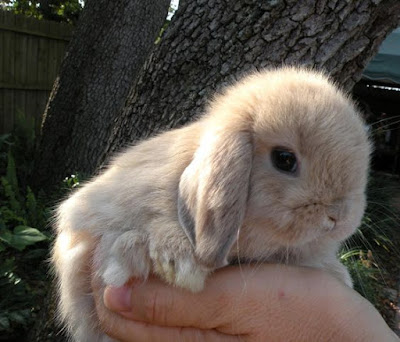 Health
HealthA Holland Lop is not susceptible to any hereditary health issues, but taking proper care of your rabbit will make their life (and your veterinary bills) better in the long run. Make sure you regularly check their teeth for overgrown teeth, which can grow into their jaws and mouths and become extremely painful. A diet high in hay will make sure this does not happen, as hay naturally files down a rabbit’s ever-growing teeth.
Spaying and neutering can be done at a young age in a rabbit’s life. Does need not be older than six months before they can be safely spayed (some veterinarians will perform the procedure at four months, but most would rather wait until six months). Bucks, on the other hand, can be neutered as young as three months old and it is commonly known that spayed bucks make for less aggressive companions (although Holland Lops are not known be aggressive at all, so neutering the buck may not do much).
source: rabbitbreeders.us















No comments:
Post a Comment